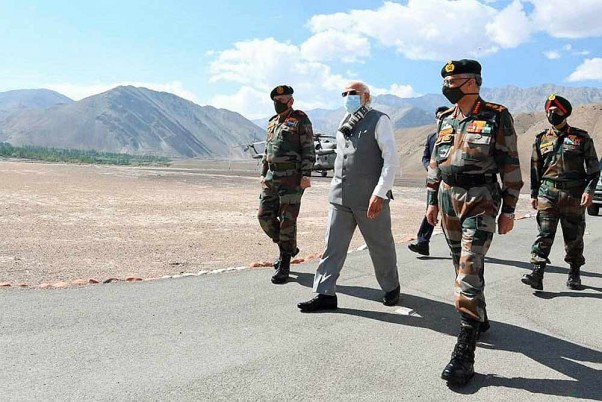In an attempt to create better synergy between the armed forces of the country, the Narendra Modi government has given the nod to set up five integrated theatre commands by 2022 with defined areas of operation. The move was in the offing after India had appointed its first Chief of Defence Staff (CDS) in Bipin Rawat on December 30, 2019. Out of the five theatre commands, China and Pakistan will have specific command due to rising conflict with these countries.
According to a Hindustan Times report, the remake of Northern Command will begin from Karakoram Pass in Ladakh and continue till Kibithu, the last checkpoint in Arunachal Pradesh. The military command will guide the Line of Actual Control with China and the headquarters of this command is expected to be in Lucknow.
The Western Command will be remanded from Indira Col on Saltoro Ridge in the Siachen Glacier area with its headquarters prospecting at Gujarat’s trip to Jaipur. The third theatre command will be the Peninsular Command; Fourth, a full air defence command; and fifth, a marine command.
The Peninsular Command’s likely headquarters may be Thiruvananthapuram. The Air Defence Command will not only speed up the country’s airstrikes. It will also be responsible for defending Indian airspace through multi-role fighters with all anti-aircraft missiles under its control. The work of preparing a detailed report for the Peninsular command will start from 31 March and the command will likely be formed within a year.
The CDS Bipin Rawat said that the creation of five military theatre commands will be helpful in making better use of the defence budget. He said a Common doctrine and training command will be made to develop working methods and to ease operations within the military.
Currently, there are a total of 17 commands which causes a lot of trouble in coordinating between the armed forces in case of any military activity. The Army has seven commands – Northern, Eastern, Southern, Western, Central, Southwestern and Army Training Command; the Indian Air Force too has seven commands – Western, Eastern, Southern, Southwestern, Central, Training and Maintenance while the Navy has three commands, Western, Eastern and Southern. Besides these, there are two tri-Service Commands (Strategic Forces Command) and the Andaman and Nicobar Command, which is rotated among the three services.
All the 17 commands are not co-located at the same station and it seems as if the commands have been developed with the sole aim of keeping out of each other’s operations.
According to senior officials familiar with the matter, all five commands will be headed by Lt General or equivalent rank commanders, who will be the first among equals with the heads of the present commands reporting to them. The task of the Chief of Staff of Army, Chief of Air Staff, and Chief of Naval Staff will not be operational but involve mobilising resources to the theatre commanders as it is in the US military.
A professional military establishment like India has always needed these changes as every big military like that of the US has a theaterisation of commands. Even India’s northern neighbour, China has a theaterisation of commands which allows its armed forces to function better.
By this theaterisation, India could muscle to its warfighting capabilities and in case of a twin attack from Pakistan and China, manage the entire situation much more efficiently.
